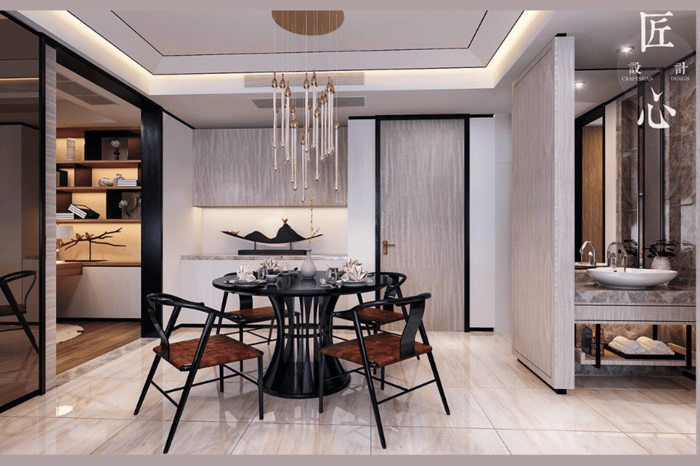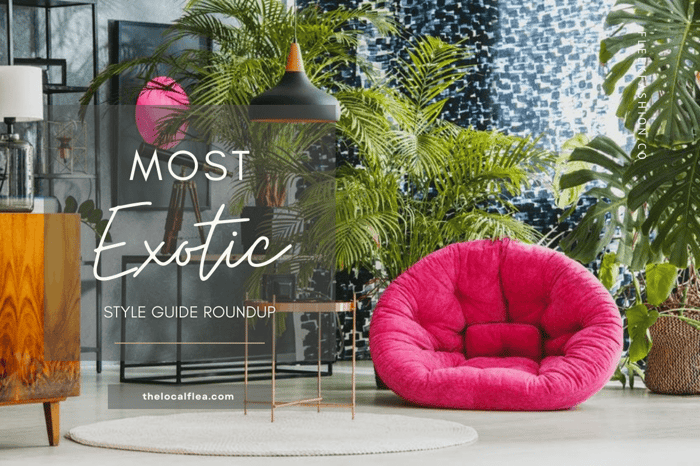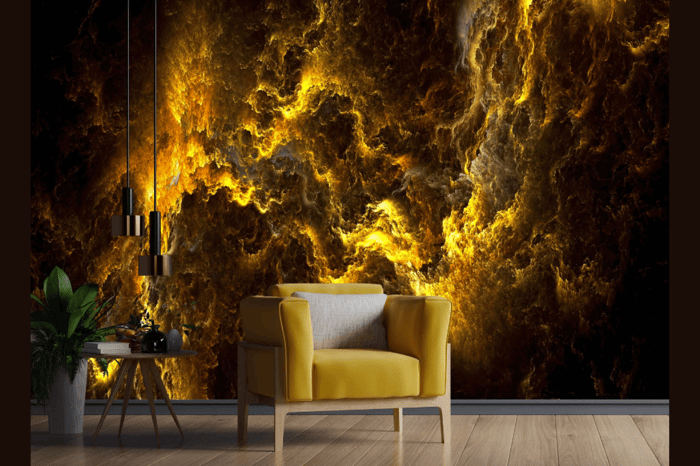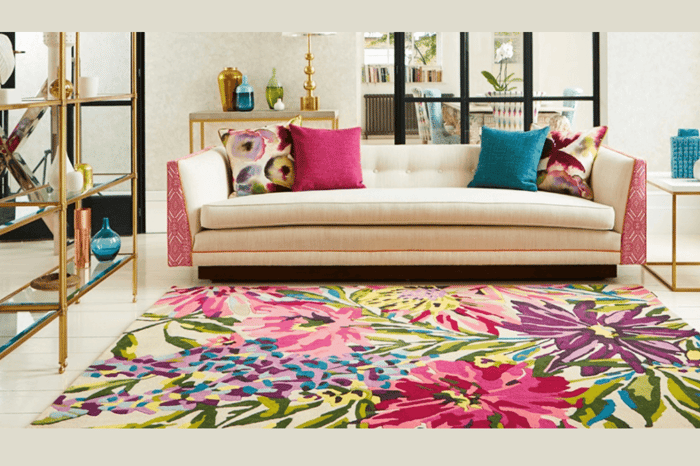Tips For Various Asian Decorating Styles
From elegantly simple and clean lines, to ornate furnishings with bold colors. Asian style interior design covers the cultures of Japan, China, Thailand, and Vietnam. This guide will take a look at the three most prominent styles of design from the orient: Chinese, Japanese, and Zen. While many homes that employ Asian themed decor mix more than one style, we’ll look at main components of each of them individually.
CHINESE DESIGN
Feng Shui- The Art of Balance & Placement
When Chinese people begin the process of decorating or designing their spaces, be it home, business, or outside areas, they first take into account the principles of feng shui. Now that it is popular in the West, you may have heard of this practice. Feng shui follows guidelines based on the theory that all objects have positive or negative energy and need to be balanced in each room or space. There is much to contemplate when following feng shui standards, such as which elements are used (wood, fire, metal, earth, water) and how they affect all aspects of your life (wealth, health, love, family, etc.). Check this guide for further research.

Colors
Red & Black
The immediate colors that come to mind when visualizing Chinese design colors are no doubt high-gloss lacquered red and back. In Chinese culture, the fire-engine red is associated with good luck, fame, money, happiness, and joy as well as long life. Black is associated with power, stability, knowledge, and trust. With all those associated meanings, it is understandable why those two colors are so prominently featured. Red walls with black trim is a gorgeous combination in your Chinese inspired home. To add an artistic element, you might paint black Chinese calligraphy on the red walls for a decorative element.

Gold, Gray, & White
For a more modern Chinese palette, combine gold, gray (or muted silver), and white. This is a more sophisticated palette that denotes wealth and ancestry. Gold doors, white trim and soft gray walls (or any combination of those three) provide a luxurious setting for your modern Chinese interior.
Furniture
Current Chinese furniture mimics traditional styles as they both are defined by natural materials, simple design, and exquisite craftsmanship. Furniture design shows respect for nature and aesthetics while incorporating the beauty of moderation and tranquility. Chinese classical furniture from the Ming and Qing dynasties used hardwoods such as rosewood and padauk which are long lasting, made to be beautiful and durable. These raw materials are now rare and expensive so finding yourself a quality used piece is a real treasure. The characteristics of Chinese furniture are ornate carvings and lavishly decorated pieces that form structurally to the body.
Accessories
Chinoiserie is a Western interpretation of Chinese motifs. The style was used widely throughout European art, furniture, and architecture during the 17th and 18th centuries. This influence from China can also be seen in the architectural style in pavilions and garden pagodas. From folding screens, to figurines, and pottery and porcelain, chinoiserie is still widely coveted and used in today’s Asian inspired decorating.

Animal Motifs
Chinese decor is studded with all sorts of animal motifs, including mythological beasts, such as dragons. These decorative elements are all symbolic and have deep meaning in Chinese culture. You will see displays of animal design in vases, wall hangings, pottery, textiles, art, and sculptures. Monkeys, exotic birds, elephants, and all nature of wild animals will have a place in your Asian styled home design.
JAPANESE DESIGN
This design style is more calming than its Chinese counterpart. Using natural materials and subdued colors will begin to create the base for your Japanese style home decor.
Colors
Browns
A soothing color palette of brown, beige, tan, and dried bamboo provide one of the main foundations for a Japanese styled home. These simple colors from nature are also derived from wooden elements, resulting in a neutral color palette.
Green
The vibrant, fresh greens of nature are another strong part of the Japanese home colors. Houseplants, accent walls, window shades lighter shades of greens can grace the walls in this design style.

Furniture
Furniture tends to be clean-lined and simple. Minimal bedding such as futons are traditionally used for bedroom furniture. Low tables and floor cushions are the norm for dining areas. Of course we all know the simple and elegant floral arrangements of orchids and bonsai that grace every Japanese themed home. The translucent rice paper screens are generally used as room dividers or doors. Fiber based window shades made from natural material such as bamboo allow for loads of natural light. Of course rice paper lamps continue the theme of softness and natural light at night.
Accessories
Floor mats, screens, wave prints, crane art, and bonsai trees are all traditional Japanese accents. A wall art mural with a serene stylized nature scene is a typical accent to add, and of course size can be reduced. Elegant wind chimes, a water fountain, a Buddha statue, and graceful candle holders also work to make your space more Japanese themed in design. And absolutely do embrace bold colored and highly lacquered traditional Japanese accents, such as trays, vases, boxes, and wall hangings.
 ZEN DESIGN
ZEN DESIGN
The word Zen essentially boils down to the Japanese term for the concept of meditation. Generally it’s understood that Zen is used to describe a state of self-awareness and of being at peace. Zen interior design focuses on emphasizing harmony, tranquility, and simplicity resulting in a unique style that’s simple and minimal but also features rich layers.
- The core of Zen décor is a sense of tranquility rather than specific features.
- Incorporating a minimalist style allows you to make the most of a clutter-free home and life.
- Create a connection to nature, resulting in a more relaxed and tranquil home.
- Prioritize what personally works for inspiring your sense of peace and balance.
Before Beginning
Zen basically translates to minimalism, thus before starting your Zen decorating journey it would be wise to declutter. Following organizing queen Marie Kondo’s advice, it’s time to go through your belongings and ask whether or not it sparks joy. Try to pare down to only the items that have a special meaning or are dear to you. Here are several guides to easily decluttering, organizing, selling items, and tidying up your home.
Colors
Revolving around nature’s sense of calmness, choose neutral hues in the softest tones such as white, shades of beige, or stone. Accent colors are natural too; hues of soft greens, yellows, and light blues.
 Furniture
Furniture
Streamlined and minimalist. The idea is to carry on the simple uncluttered look with clear lines. Prioritize higher-quality pieces made of natural materials. Maintain the feeling of being grounded with low furnishings...low tables, flat pillows, platform beds.
Accents
Plants are key in this setting; bamboo, snake grass, and the dracaena. Displayed beside collections of rocks or a water feature. Find ways to bring in natural sunlight with open floor plans and open shades. Use floor lamps, small table lamps, lanterns, and candles to spread the warmth and soft glow of this style, no harsh overlighting. Incorporating natural fabrics and textiles such as linen, cotton, and wool, into your curtains, throw pillows, and area carpets is another way to continue your connection to nature in a Zen home.
SUMMARY
For Asian decor to fully work, it is best to embrace the style throughout your home. Start by reducing clutter. Then take a deep look at your space and layout while applying the guidelines of feng shui. Keep furniture lines clean and simple. Finish by infusing the space with your choice of Asian inspired accessories.

#asian #auctions #collectibles #asiantattoo #chineseartist #sculpture #porcelain #chinesepainting #qingdynasty #china #chinese #orientalart #vintage #homeinspo #designinspiration #renovation #architect #love #house #kitchen #kitchendesign #living #luxuryhomes #lifestyle #homedecoration









